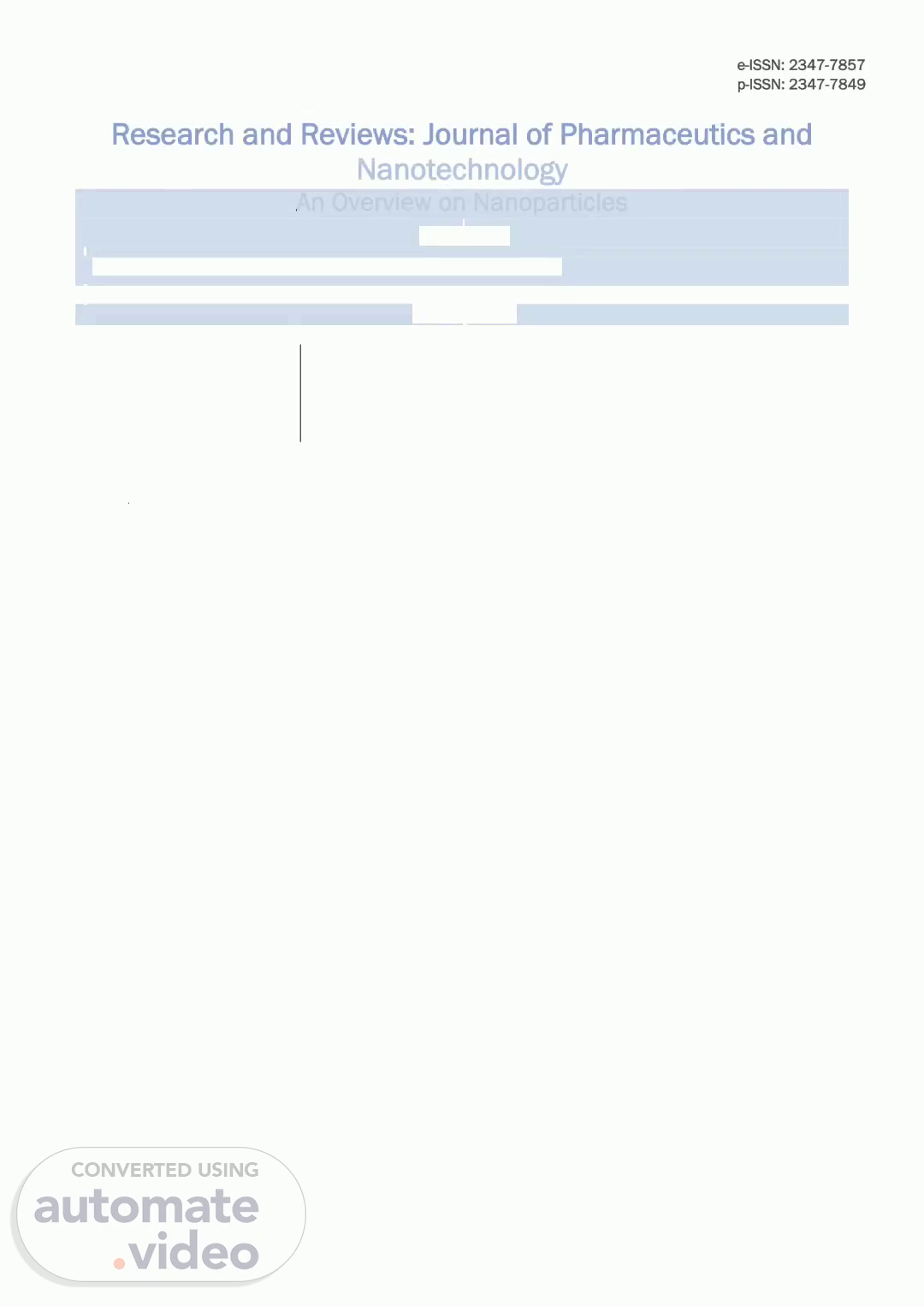
Page 1 (0s)
[Audio] Today, nanoparticles have become increasingly important in the area of biomedical research and drug delivery. Due to their small size, nanoparticles are able to effectively penetrate and accumulate in sites of disease or injury, leading to more targeted and effective treatments. In this presentation, I will outline the history of nanoparticles, the rationale and characterization techniques used for developing them for drug delivery, and their current applications in the field of biomedical engineering. Additionally, I will investigate the potential of nanoparticles to revolutionize the way medicines are delivered in the future..
Page 2 (1m 12s)
[Audio] Nanoparticles have the ability to deliver "targeted moieties" in a controlled fashion. Various methods can be used to regulate drug delivery, which makes nanoparticles an exciting and beneficial discovery for drug delivery research in medical science. They are capable of delivering drugs directly to specific sites in the body, without having to go through the bloodstream, and to target areas of the body that would be more difficult to reach with regular drug delivery. This provides a more efficient and effective method of medical care. Combining this technology with existing drug delivery systems opens up a range of new opportunities for medical treatments, as well as potential applications in other industries..
Page 3 (2m 23s)
[Audio] Nanoparticles have received a good deal of interest as a possible method of drug delivery. They are significantly tinier than traditional drug delivery techniques which allows them to more easily move through the body and accurately target therapeutic agents. Recent technological advances have enabled the manufacture of nanorobots and nanocapsules as drug delivery tools; they can enter tissue more successfully and release medication in a more controlled fashion. Furthermore, nanoparticles have been used in the development of lithium ion batteries, 3D printing materials and aerospace materials. Even though nanotechnology seems to be a very promising development, particular ethical challenges must be taken into account such as the possibility of dividing the population into two groups depending on availability of modified treatments as well as the impacts on global economy. As nanotechnology keeps being improved, it is critical to assess both its advantages and potential risks..
Page 4 (3m 56s)
[Audio] Nanoparticles have been employed in drug delivery for a long time, allowing drugs to be transported in a precise and efficient manner. Recently, there has been greater focus on their use for this purpose. Over the last few years, a number of experiments have been carried out to create nanoparticles of various materials, like silymarin, hesperetin and glibenclamide. Advances in characterisation techniques, e.g. those involving titanium dioxide and zinc oxide nanoparticles, have been utilised to determine the size and cell uptake of silica nanoparticles. Studies on the antibacterial impacts of polyvinyl pyrrolidone capped silver nanoparticles have been conducted extensively, as well as the use of nanoparticles for protein encapsulation and as bimodal contrast agents for medical imaging. Gold nanoparticles have also been studied for their impact on plant physiology and chemical properties, and researchers have recently examined the utilisation of polymer-coated hydroxyapatite nanoparticles for the delivery of statins. The application of nanosilver has been tested as a potential approach for influencing human intestine microbiota. All this research suggests a promising future for the usage of nanoparticles for drug delivery..
Page 5 (5m 55s)
[Audio] Nanoparticles have been a rapidly advancing area of science, with various studies published in the last few years providing evidence of this. In 2013, Jebali and Kazemi published a toxicological study that would potentially be used to treat Cutaneous Leishmaniasis, while in 2002 He, Qian and Yin discussed the preparation of polychrome silver nanoparticles in various solvents. Furthermore, 2009 saw He, Wang, Pan and Wang researching the nonlinear optical response of Au and Ag nanoparticles-doped polyvinylpyrrolidone thin films. Finally, in 2015, Nikalje published a study on nanotechnology and its applications in medicine. These works demonstrate the vast range of potential uses for nanoparticles, ranging from new materials to medical treatments. Appreciation is extended for taking the time to learn about this important field of research..